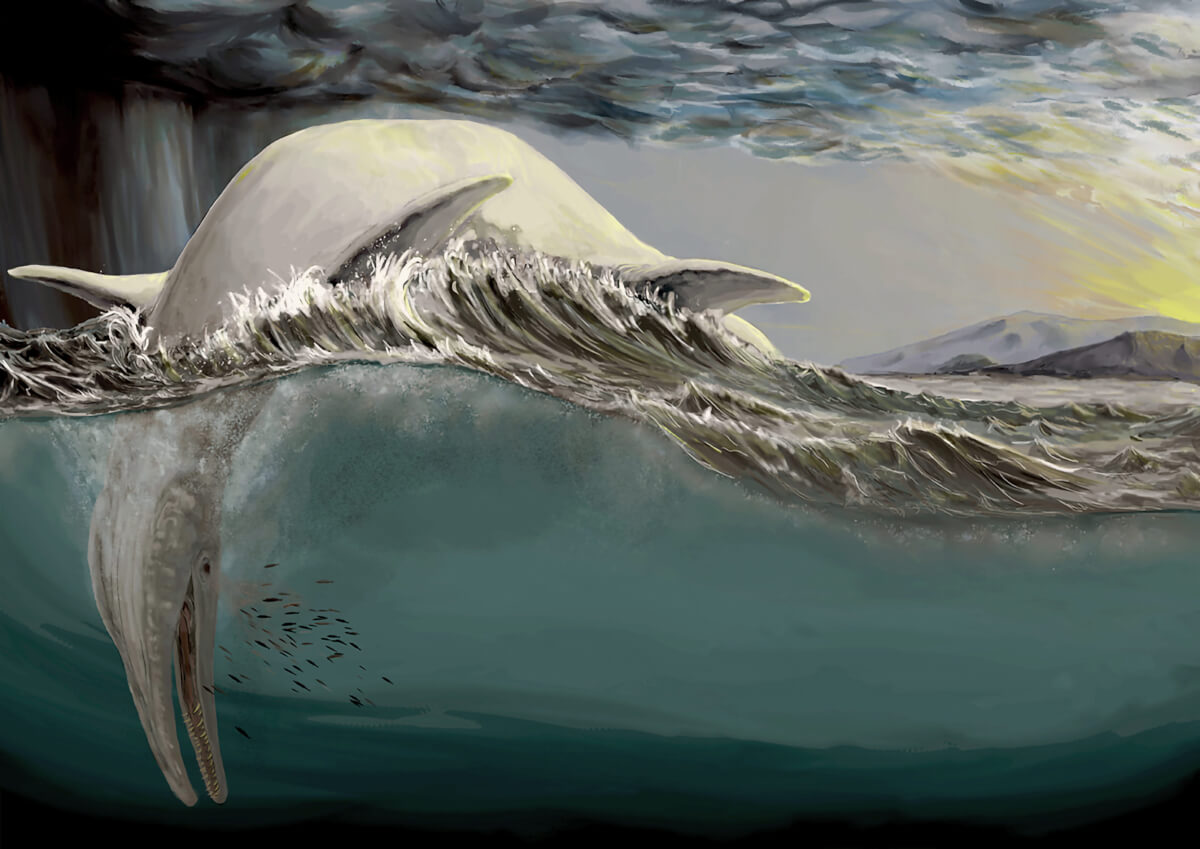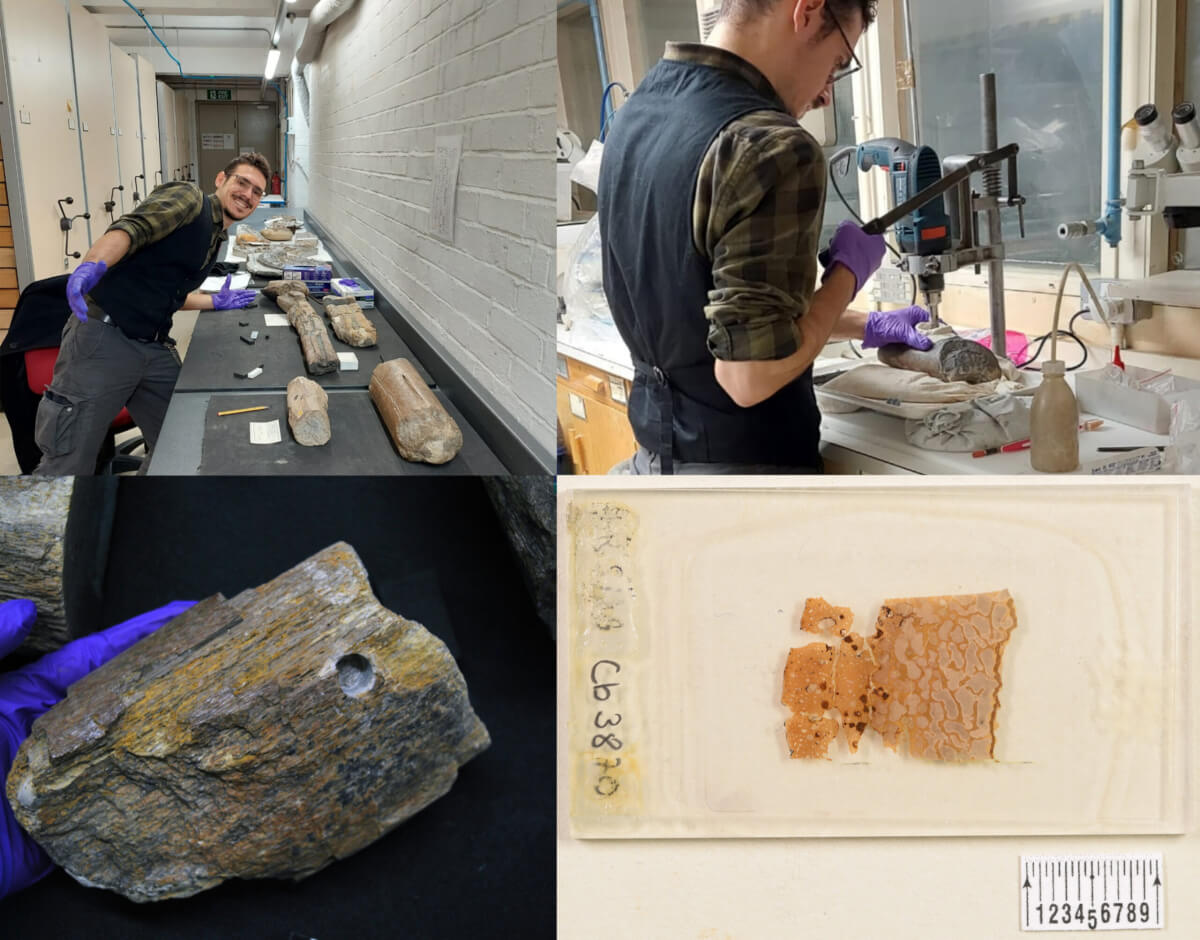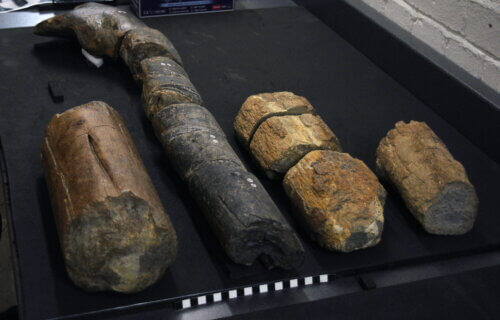An ichthyosaur was a real-life sea monster that ruled the waters waters during the age of dinosaurs hundreds of millions of years ago. Some ichthyosaurs grew to enormous sizes with lengths between 82 to 96 feet, rivaling modern whales. But for over 150 years, paleontologists have been puzzled by mysterious chunks of large bones found across Europe. Were they from giant amphibians, dinosaurs, or something else entirely?
A new study published in the journal PeerJ has finally cracked the case. Researchers from the University of Bonn analyzed the microstructure of these enigmatic bones from the United Kingdom, France, and Germany, and compared them to bones from a giant ichthyosaur called Shastasaurus sikanniensis. They discovered that the European bones shared distinctive features with the ichthyosaur, leading to an exciting conclusion — the mystery bones belong to a giant ichthyosaurs.
“Already by the beginning of the 20th century, some other researchers had theorized that the fossils could possibly be from a gigantic ichthyosaur,” says study co-author Marcello Perillo, researcher in the Institute of Geosciences at the University of Bonn, in a media release. “Bones of similar species generally have a similar structure. Osteohistology — the analysis of bone tissue — can thus be used to draw conclusions about the animal group from which the find originates.”

So what exactly did scientists find that linked these bones? First, the European and ichthyosaur bones contained an unusual type of bone matrix (the main building material of bone) that researchers named “intrinsic fiber matrix” or IFM. Imagine IFM as a network of mineralized collagen fibers arranged in a net-like pattern, embedded in a disorganized matrix. This special fiber arrangement likely reflects rapid bone growth.
The second clue was the arrangement of blood vessels in the bones. In the mystery bones and the ichthyosaur, blood vessels ran strictly longitudinally (along the length of the bone), a pattern that shows up as fine grooves on the bone surface. This is quite different from the more haphazard or radial arrangements seen in other animal groups.
Third, the bones contained many closely spaced growth marks surrounding the blood vessels. These marks indicate that the bone was laid down in bursts, with alternating light and dark layers that probably reflect changes in the density of the collagen fibers.
When Bonn researchers compared the microstructure of Shastasaurus bones to the European fossils, the similarity was clear. Although the preservation wasn’t perfect, the diagnostic intrinsic fiber matrix could still be detected. The porosity and strictly longitudinal blood vessels also matched.
“However, this structure is not found in fossil samples from other animal groups that I have studied,” emphasized Perillo. “Therefore, it seems highly probable that the fragments in question also belong to an ichthyosaur and that the findings refute the claim that the bones come from a land-living dinosaur.”
Ruling out other groups was an important part of the study. Researchers compared the mystery bone features to other large marine animals from the Triassic period, like plesiosaurs and some crocodile relatives, as well as big land animals like dicynodonts (extinct relatives of mammals). Although a few showed superficially similar features, none matched in the whole suite of characteristics.
“These huge jaws would have been exposed to strong shearing forces even when the animal was eating normally,” notes Perillo. “It is possible that these animals also used their snouts to ram into their prey, similar to the orcas of today. However, this is still pure speculation at this time.”

The unique bone microstructure of these giant ichthyosaurs provides insight into how they became so large. The woven fiber matrix and many blood vessels are signs of very fast growth, which was necessary to achieve such great size in the first place. The distinctive longitudinal blood vessel arrangement and special collagen fiber matrix may have also given their bones the right combination of strength and flexibility to power their huge swimming muscles and skulls. In a sense, their bones had more in common with the mineralized tendons of some dinosaurs than typical reptile bones.
The “intrinsic fiber matrix” of ichthyosaur bones appears to be a completely new and now-vanished type of bone, tied to their unique evolutionary path as the biggest marine reptiles of their time. As more ichthyosaur specimens are studied at the microscopic level, perhaps we will gain even greater insight into the lives of these real-life sea monsters.
StudyFinds’ Matt Higgins contributed to this report.
